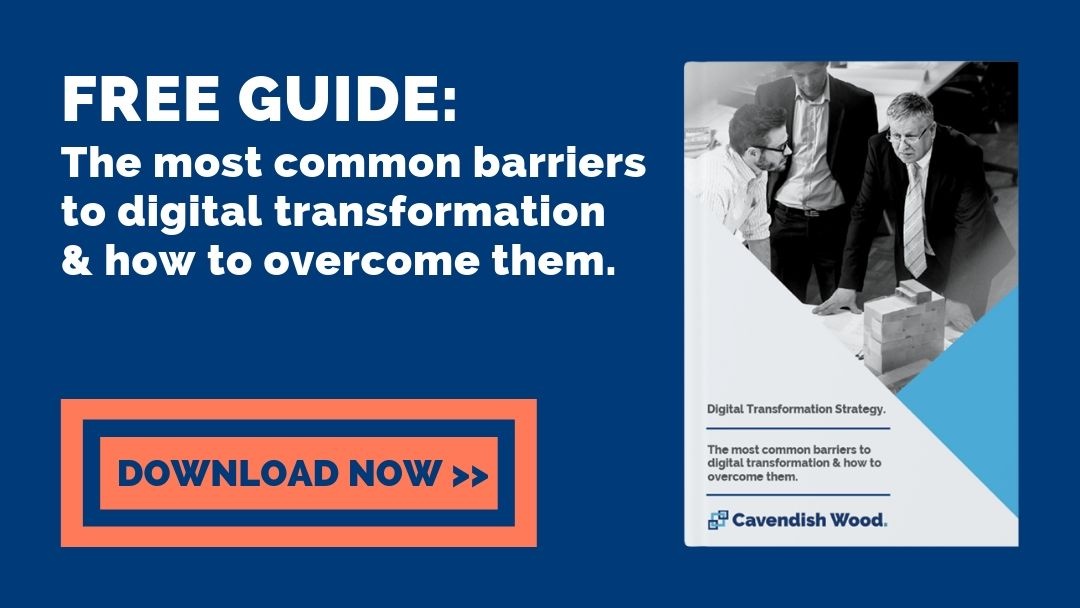
No business can exist without satisfied customers, so it’s important to create a great experience for them. People who think highly of your company and brand are more likely to show customer loyalty, spread the word about your products and services, and give you good reviews that bring new customers and more sales.
Salesforce’s State of the Connected Customer report shows that 76% of customers are prepared to switch to another brand to find the customer service experience they want. These are all good reasons for you to start building a customer experience team now, to ensure your company continues on a successful growth path.
What customer experience is - and why it’s important.
Customer experience (CX) is what your customer thinks and feels about your brand, once he or she begins dealing with you. It grows out of the way your customers interact with your staff, their satisfaction with your products and services, the way you market to them, resolve their problems, and provide support when they need it. Much of this interaction happens online or digitally, so managing customers’ digital experience effectively is the first step to improving it.
The Harvard Business Review says customer experience makes people more likely to recommend a company and to buy from it in the future. Meanwhile, Forrester reports 76% of company executives believe that improving CX is a “high” or “critical” priority. Many companies have executive-level positions to manage the process.

Research shows that by 2020, customer experience will overtake price and product as the main differentiator between brands. Although most companies understand the importance of the customer experience, few know how to make improvements in their current status. It’s essential, however, for brands to deliver great customer service continuously, to make sure they stay in business.
How to incorporate customer experience into your company.
Make good customer experience management a big part of your company operations by building a customer experience team and developing a strategy all your employees can apply. To do this, you’ll need to follow a series of steps that include:
- Listening to your customers. Make it a top priority to really listen to customers at all levels of your business. Find out what they want from you, and where they are getting it. Uncover any areas where customers are disappointed with your products and services and the reasons why.
- Find out what your customer expectations are, and look for ways you can exceed them. There’s an old expression that says “Try to catch people doing something right,” which applies very well in the customer service world. Don’t just look for ways to give your customers what they want, but look for ways to delight them.
- Collect feedback from your customers. Get software to help you analyse it and map customer journeys, which will help you to understand customers’ levels of satisfaction and get a big-picture view of their experience. It also allows you to identify the opportunities to make changes that will increase customer retention, and improve your company’s standing in the marketplace.

Develop a customer experience strategy based on the data you collect, which will help you to meet the needs of your customers at the right touchpoints. Since this is a large-scale project for any company, you’ll need to start building a customer experience team right now if you want this to pay off in the next year or two.
Developing a customer experience strategy.
Many companies are starting to realise the value of CX strategies, and this is not something new. A survey conducted in 2011 by Bloomberg Businessweek reported that “delivering a great customer experience” had already become a primary strategic objective back then. In 2019, it’s more important than ever to have a customer experience design process that is up-to-date and cross-functional.

Your strategy should include five key aspects of the digital experience, which are:
- Reachability. This means the channels you use to reach your target audience and how you use them.
- The convenience of services. How do you serve clients and are the methods convenient for them? Can you do more to improve convenience and enhance the experience for customers?
- A smooth purchasing process. How simple is it to buy from your company, and can you make the process easier for the customer?
- Personalisation. How well does your business meet or respond to individual people’s needs at scale? How will you use data to make sure you’re providing personalised information? Can you include the use of live chat and social media to reach people on a perceived one-to-one basis?
- Simple methods of getting information. How easy is it for potential customers to get the information they need about your products and services? Do they have to struggle at any point to get it?
Once you’ve developed a feasible strategy, it’s time to start building a customer experience team who will focus on implementing the process.
Developing your customer experience team.
So, what is a customer experience team and why do you need one? Some company executives believe customer experience is a function that should fall under marketing, while others expect to find it under operations. Ideally, it should be a standalone, cross-functional process that includes every aspect of user experience with the company.

Start building a customer experience team with the appointment of a small, focused group. You can staff this group by re-aligning some existing resources, hiring a couple of new people with the right experience, and expanding the team’s capabilities with a consulting partner.
Key roles you need to fill in the initial stages are:
- An executive sponsor, who provides leadership and ensures collaboration across the organisation. This person is most often an existing, high-ranking officer who has the authority to make decisions.
- A customer experience leader, who manages the implementation of the strategy in all areas of operations.
- A digital business analyst, who provides the team with the insight they need to understand customer journeys and presents recommendations for creating customer-centric processes.
- A digital strategist, who “translates” these recommendations into actionable proposals for software, programming, restructuring and other digital transformation.
- Communication strategist, who is responsible for communicating the changes to employees and other stakeholders, and providing change management communications for the organisation as a whole.
Implementing the strategy is only the first stage of what a customer experience team does, however. Once your customer experience program is fully operational, you’ll need to be certain the team will continue to perform the tasks and responsibilities in the way you want them to.
The time is now.
Customer experience has been a focus of savvy businesses for several years, but recent developments in artificial intelligence, machine learning and other aspects of digital transformation have made it far more possible to achieve. All the same, nothing can be done without the right people in the right positions. This makes it important to not only start building a customer experience team at your earliest convenience but to identify the transformational leadership you need to realise your goals—on time and on budget.

